Your bicycle’s tires might not be something you think about very often, but they have crucial implications for every aspect of your ride. Better understanding how your mountain, gravel, and road bike tire size is measured can help you fine-tune your equipment, and learning how tire size relates to performance can make you faster when it counts. What are the basics of bike tire size?
Bike tires are typically measured in two dimensions— diameter and width. The diameter measurement is an approximation of the tire’s total outside diameter including treads, and the width is a measurement of the approximate total width of the tire when mounted and inflated. For mountain bike tires these dimensions are expressed in inches, while a millimeter-based system called French sizing is used for road, gravel, and track. For example, a 29 x 2.25 mountain bike tire is about 29” in diameter and about 2.
25” wide, while a 700c x 25 road tire is approximately 700mm in diameter and 25mm wide.
This makes it pretty straightforward to fit a modern tire to a modern rim—a 700c tire will almost definitely fit a 700c road rim (we’ll explain that “c” later), and a 29” tire will likely fit a 29” mountain bike rim. But some obsolete or unusual sizes can be misleadingly labeled, and any tire’s nominal measurements (especially width) are really just approximations. Rim width and tire pressure can significantly influence the size of a tire when mounted and inflated, and tires often measure a bit larger or smaller when installed than the printed dimension would suggest.
To reduce confusion, most tires are also labeled with a second system of measurements called ISO (formerly known as ETRTO). The ISO measurement displays the tire’s nominal width in millimeters, followed by the diameter of the tire’s bead (the surface that actually attaches to the rim) in millimeters (ex: 25 x 622 is a common road tire).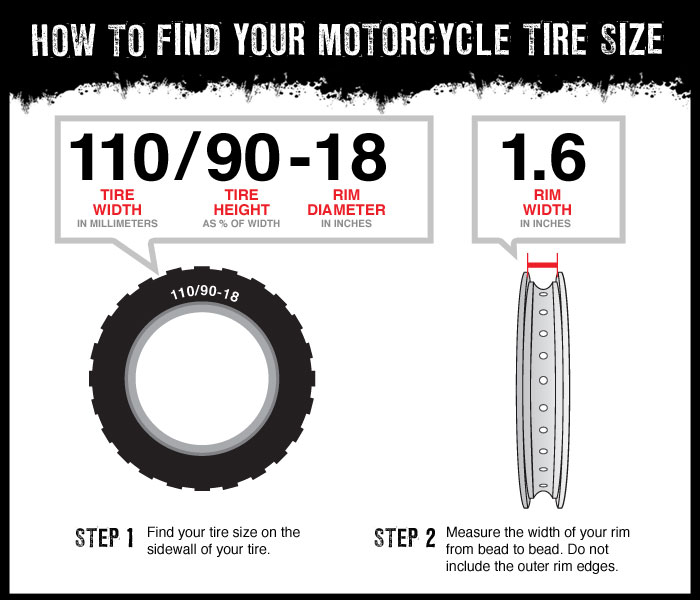 This measurement can help resolve any ambiguity about whether a tire will fit a particular rim, but as with other systems, the ISO measurement of a tire’s width is an approximation and may be impacted by pressure and rim width.
This measurement can help resolve any ambiguity about whether a tire will fit a particular rim, but as with other systems, the ISO measurement of a tire’s width is an approximation and may be impacted by pressure and rim width.
Nearly all modern road bikes use 700c wheels and tires. It used to be widely accepted that narrower tires were faster and 23mm was the standard width. But recent research has proven wider tires to be faster and more comfortable in most situations. As a result, 700c x 25mm and 700c x 28mm are now the most common road tire sizes; many riders prefer even wider widths of 30mm or 32mm. The limiting factor is usually the bike itself, with some frames unable to accommodate tires beyond a certain width. Most new road frames can at least fit up to 28mm tires but double-check your frame’s allowance before sizing up.
A few other less common wheel and tire sizes exist for road bikes. 650b (ISO 584) and the rarer 650c (ISO 571) are two examples, both sometimes used on bikes for smaller riders. The letter that follows the diameter measurement in French tire sizes originally delineated width, but it’s now mostly just useful to differentiate between similarly-named but incompatible sizes. For instance, a 650b tire will not fit on a 650c rim.
The letter that follows the diameter measurement in French tire sizes originally delineated width, but it’s now mostly just useful to differentiate between similarly-named but incompatible sizes. For instance, a 650b tire will not fit on a 650c rim.
It’s also important to understand the different types of mutually-incompatible road tires. Clinchers are most common; these are the familiar tires that seat into a walled rim around an inner tube. Certain clincher rims can also be used with tubeless tires, which use a liquid sealant in place of an inner tube. Finally, tubular tires are permanently sewn closed around an internal tube and are glued into a specially-made rim. All 3 of these tire types use the same sizing standards and terminology but are generally not interchangeable.
Tires are printed with a manufacturer’s recommended pressure range, and road riders used to think inflating their tires to the highest possible pressure was fastest. But with the move to wider tires has also come a trend towards lower pressure.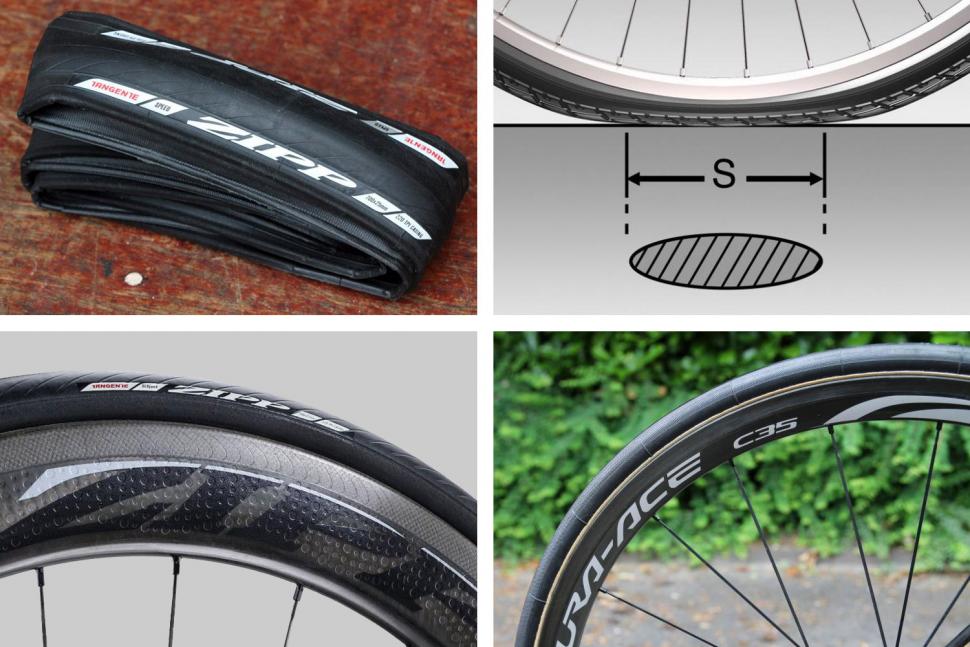 The science of tire pressure is complicated, but wider tires require less pressure for the same volume of air than narrower tires, allowing for a more comfortable ride. Additionally, wider tires at lower pressures reduce bouncing and are actually faster on most surfaces than smaller, harder tires.
The science of tire pressure is complicated, but wider tires require less pressure for the same volume of air than narrower tires, allowing for a more comfortable ride. Additionally, wider tires at lower pressures reduce bouncing and are actually faster on most surfaces than smaller, harder tires.
It’s tough to make a generalized recommendation for pressure—riding conditions, your weight, and the tire’s size all play a part. But generally, the larger the tire and the rougher the surface, the lower the optimal pressure. With each 3mm increase in tire width, you can usually reduce pressure by 1 Bar (~14 psi). Also, tubeless tires can generally be ridden at lower pressures than tubed tires of the same size. Some tire and rim manufacturers have calculators on their websites that make personalized recommendations for pressure; these are a great starting resource to make your ride faster and more efficient.
Adaptive Training
Get the right workout, every time with training that adapts to you.
Check Out TrainerRoad
Mountain bike tires are measured in inches and are offered in 3 non-interchangeable diameters corresponding to common mountain bike wheel sizes. Most popular for high-end mountain bikes are 29” tires and wheels. Next come 27.5” setups, preferred by some riders who like smaller, slightly more maneuverable wheels. And finally, 26” wheels and tires used to be the standard, but are now found mostly on entry-level and kids’ bikes.
Tires at each of these diameters are available in a wide variety of widths, which riders select for the specifics of their discipline and terrain. Cross-country racers usually choose comparatively narrow tires ranging from 1.9” to 2.25” wide. Trail, all-mountain, and enduro bikes are normally equipped with wider tires between 2.25” and 2.4”, and downhill tires are even wider at 2.4” to 2.6”. Finally, fat bike tires are mounted on purpose-built rims and push the boundaries even further, sometimes measuring as wide as 5”. The specifics of tire choice are carefully considered by mountain bikers, with racers often choosing different widths and tread patterns depending on the course and conditions.
The specifics of tire choice are carefully considered by mountain bikers, with racers often choosing different widths and tread patterns depending on the course and conditions.
Interestingly, most mountain bike wheel sizes are actually the same diameter as road wheels—29” wheels are equivalent to 700c, while 27.5” are the same as 650b. But you wouldn’t want to put tires intended for one on a wheel intended for the other, as the rim’s width is dramatically different for road and mountain bikes and would interfere with the tire’s performance.
Tire pressure is a crucial concern in mountain biking. Small changes in pressure can dramatically impact performance and handling on the trail, and experienced mountain bikers regularly adjust pressure depending on terrain, conditions, riding style, and tire choice.
Because all of these variables are factors to consider, it’s nearly impossible to make a general recommendation for mountain bike tire pressure.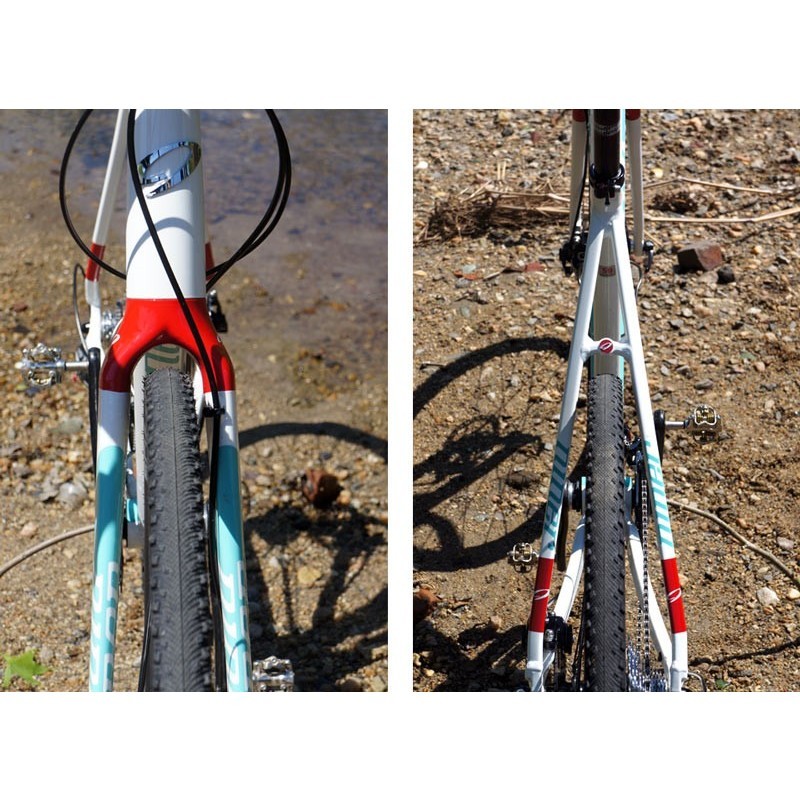 Online calculators can help suggest a starting pressure based on equipment, weight, and conditions, but in the end, it’s ultimately a matter of personal preference and learning from experience. A good strategy is to treat the first few rides on a new setup or in new terrain as experiments. Carry a digital gauge, start with pressure on the higher side, and gradually let a few psi out/ add some pressure back in as you ride to experiment with what works and feels best. Check and record your pressure when you find the sweet spot and use this as your starting point for future rides.
Online calculators can help suggest a starting pressure based on equipment, weight, and conditions, but in the end, it’s ultimately a matter of personal preference and learning from experience. A good strategy is to treat the first few rides on a new setup or in new terrain as experiments. Carry a digital gauge, start with pressure on the higher side, and gradually let a few psi out/ add some pressure back in as you ride to experiment with what works and feels best. Check and record your pressure when you find the sweet spot and use this as your starting point for future rides.
There are a few general principles to keep in mind when finding the right pressure. Typically, the larger your tire, the lower the optimal pressure. Tires with thinner casings require higher pressure, as do heavier riders. Rocky terrain may also necessitate higher pressure to avoid flats, while lower pressures can be used in smooth, grassy, or muddy conditions. Finally, some riders like to use tire inserts, which provide more flat protection and allow a few psi reduction in pressure.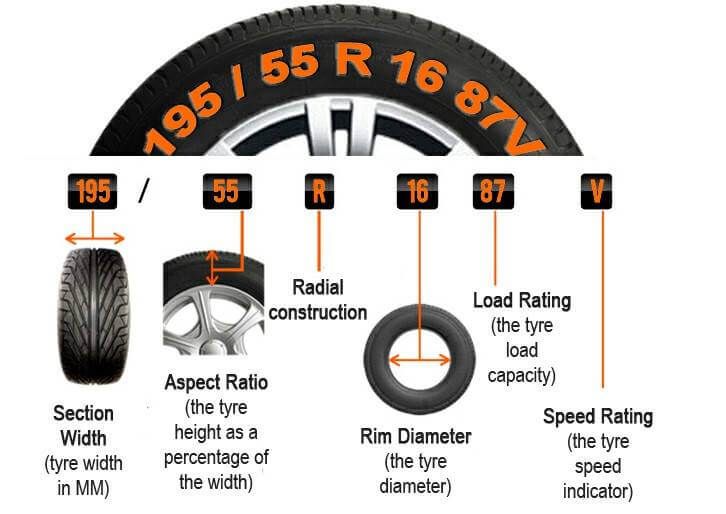
Gravel, cyclocross, and track cyclists also choose specific tire sizes and pressures to optimize performance.
Cyclocross bikes use 700c road wheels, so cyclocross tires are all designed for this standard diameter. In the past, most serious cyclocross racers used tubular tires, but tubeless tires have become increasingly popular over the last few seasons. Tires at CX events have traditionally been allowed up to a maximum width of 33mm, and UCI-governed events still impose this limit. Non-UCI races often allow larger tires, such as the 38mm maximum width allowed at USA Cycling masters, collegiate, and single speed national championships. Many local events impose no size restrictions at all—check your race’s rules to know for sure.
Gravel bikes used to be repurposed cyclocross bikes, but with dedicated gravel equipment introduced over the last few years tire options have greatly expanded.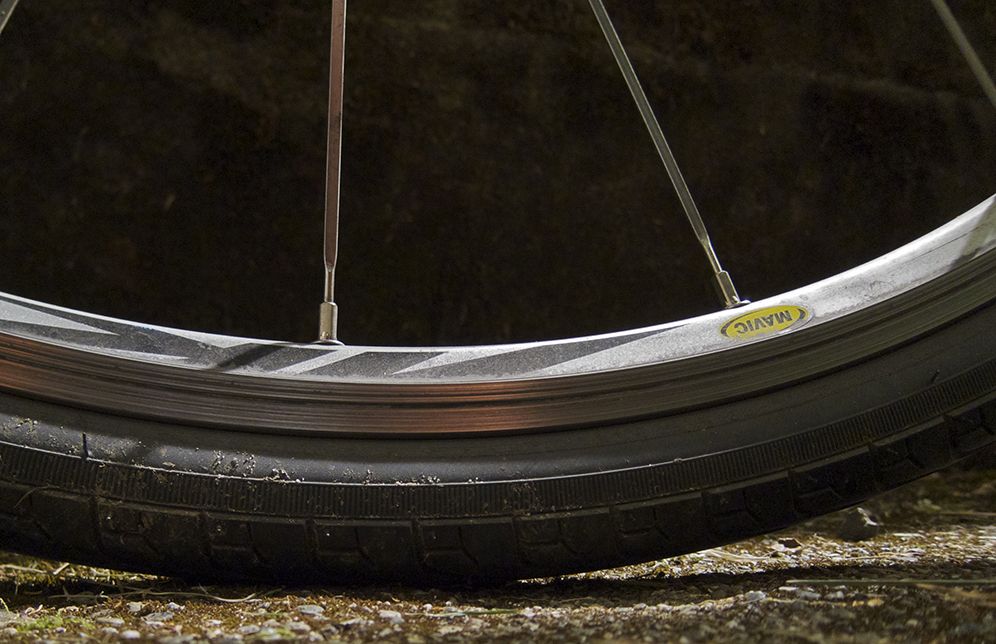 Most gravel bikes use 700c wheels, but 650b wheels are occasionally used for especially technical trail riding and bikepacking. Most new gravel bikes have clearance for tires ranging up to at least 42 or 45mm width, and some allow for even wider tires. Virtually all gravel riders use tubeless tires.
Most gravel bikes use 700c wheels, but 650b wheels are occasionally used for especially technical trail riding and bikepacking. Most new gravel bikes have clearance for tires ranging up to at least 42 or 45mm width, and some allow for even wider tires. Virtually all gravel riders use tubeless tires.
Gravel tires all balance speed and efficiency with offroad traction. Narrower tires with minimal treads are fastest on hardpack and paved surfaces but offer poor grip in loose corners. Wider tires with more aggressive tread patterns are more capable on loose terrain but roll much more slowly on smooth or paved roads. Gravel riders choose the width and tread pattern that offers the best balance for their local terrain, but may significantly adjust their tire choice and pressure for different conditions.
Like road bikes, track bikes use 700c wheels. But unlike on the road where slightly wider and softer tires are usually faster, on a smooth track harder and narrower tires have an advantage. For this reason track racers still prefer 21mm – 23mm wide tubular tires inflated to very high pressures—usually 150 psi or more on indoor tracks. Racers on rougher outdoor tracks don’t inflate their tires quite this high, but they still use much more pressure than they would on the road, with relatively narrow tires offering little in the way of puncture protection.
For this reason track racers still prefer 21mm – 23mm wide tubular tires inflated to very high pressures—usually 150 psi or more on indoor tracks. Racers on rougher outdoor tracks don’t inflate their tires quite this high, but they still use much more pressure than they would on the road, with relatively narrow tires offering little in the way of puncture protection.
| Tire Size | Use/ Discipline | ISO Designation |
|---|---|---|
| 700c x 23mm – 32mm | Road/Track | 622 |
| 700c x 35mm – 50mm | Gravel and Mixed surface | 622 |
| 650b x 23mm – 25mm | Small road bikes | 584 |
| 650b x 45mm – 50mm | Gravel and Bikepacking | 584 |
| 26” x 2.1” – 2.3” | Cross Country MTB | 559 |
| 26” x 2.3” – 2.5” | Trail | 559 |
| 26” x 2.4” – 2.6” | Enduro/ Downhill | 559 |
27.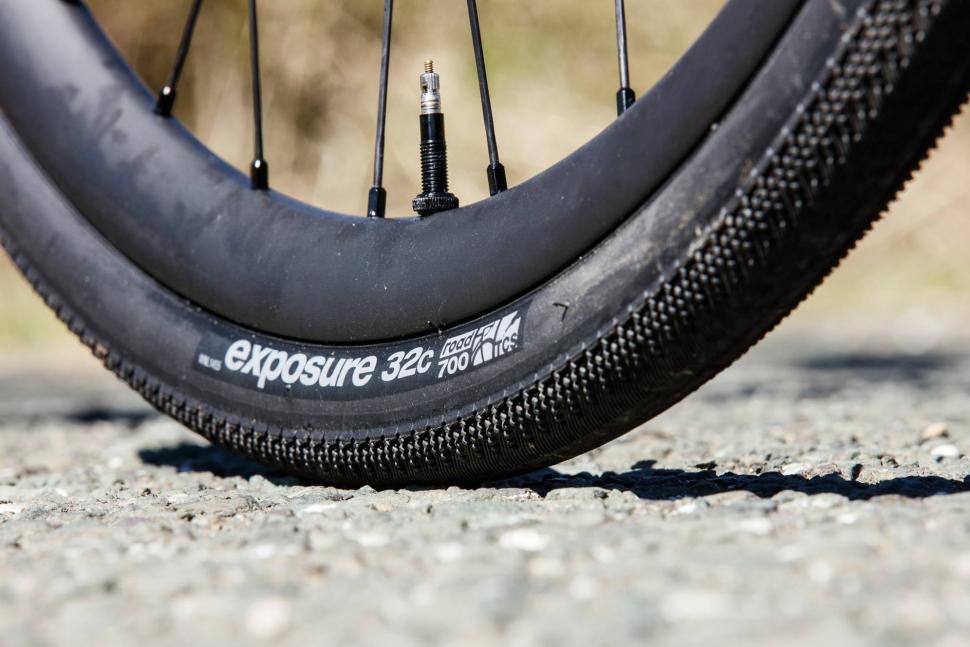 5” x 2.1” – 2.3” 5” x 2.1” – 2.3” | Cross Country MTB/ Gravel | 584 |
| 27.5” x 2.3” – 2.5” | Trail | 584 |
| 27.5” x 2.4” – 2.6” | Enduro and Downhill | 584 |
| 29” x 2.1” – 2.3” | Cross Country MTB | 622 |
| 29” x 2.3” – 2.5” | Trail | 622 |
| 29” x 2.4” – 2.6” | Enduro and Downhill | 622 |
bike tire pressurebike tire sizegravel bike tiresmountain bike tiresroad bike tires
Choosing the right tires can do wonders for your riding experience, improving comfort, traction and lower rolling resistance for a faster, more efficient ride. They can also be highly durable, lasting for months at a time without a puncture. To help you know what to look for when choosing a tire, we've created this comprehensive guide of what to know about road bike tires.
There are three types of road bike tires that are commonly used, a 'clincher' tire is the one we are most familiar with.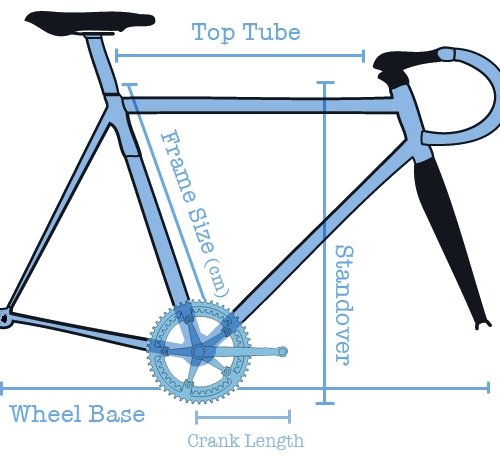 If you follow professional cycling, you'll notice almost all riders prefer 'tubular' tires, and taking a lead from mountain biking, 'tubeless' tires continuing to make waves in the road scene. Below is a description of each;
If you follow professional cycling, you'll notice almost all riders prefer 'tubular' tires, and taking a lead from mountain biking, 'tubeless' tires continuing to make waves in the road scene. Below is a description of each;
Clincher: These tires are the most common type and are currently sold with almost every new bike. Clincher tires require a tube, which, sits in between the wheel rim and the tire to inflate and hold air. In the event of a puncture, this inner tube can easily be replaced or patched. Clincher tires feature either steel (aka: wire) or a kevlar fibre bead (aka: folding) on their side, which hooks underneath the ridges of a wheel rim to hold the tire in place.
Tubular: These tires are popular with professional riders for the performance benefits they provide, but less popular with recreational riders due to their lack of everyday functionality. Tubular tires still utilise an inner tube but it is sewn into the tire rather than sitting separately from it like a clincher, as a result, tubular tires need to be stuck to the wheel via glue or special tape.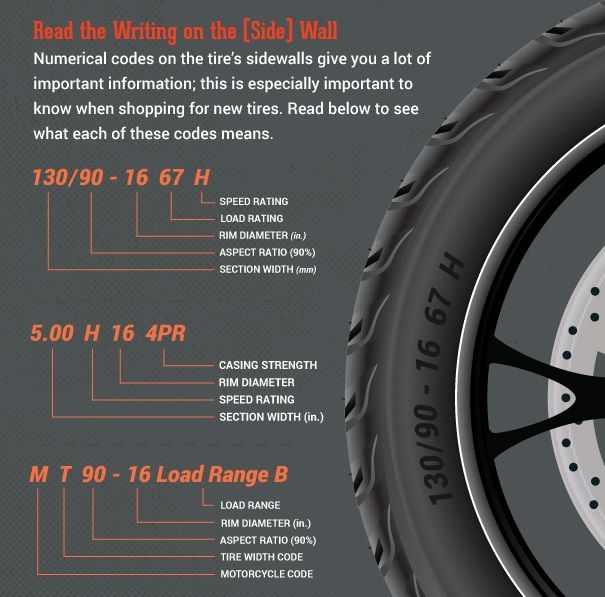 The key benefit of sticking the tire directly to the rim is that in the event of a flat, the tire will stay on the rim, allowing the rider to continue to roll without losing control.
The key benefit of sticking the tire directly to the rim is that in the event of a flat, the tire will stay on the rim, allowing the rider to continue to roll without losing control.
Tubular wheels are able to save some significant weight over clincher and tubeless wheels by not requiring the ridges for the tubeless and clincher tire beads to hook onto. Anecdotally, tubulars are also said to feel more supple and provide a better ride quality. On the flip side, changing a flat is tough work, you can't simply swap out a new tube as you would with a clincher, it requires another pre-glued tubular tire. Furthermore, if your tubular tire has been glued correctly, it will be extremely difficult to take off with your hands alone. Lastly, tubular tires are the most expensive option, which another reason for why they're considered an item best reserved for race-day
Tubeless: This technology has long been used in the mountain biking and cyclocross realms and is growing in popularity on the road too.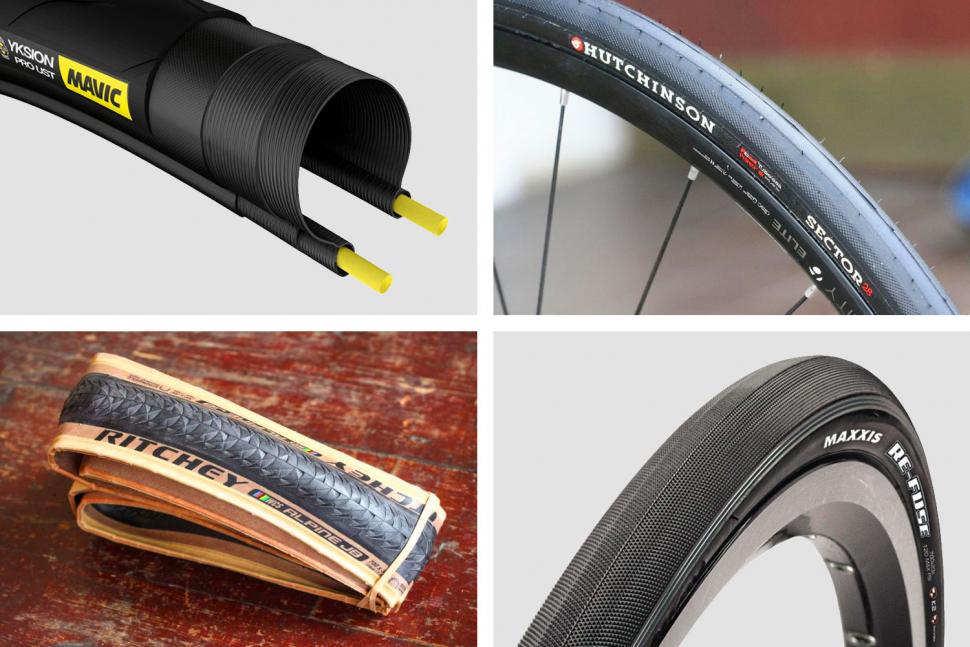 As the name suggests, there is no tube with tubeless tires, instead, it is just a tire that hooks onto the wheel as a normal clincher would, but with much tighter tolerances to create a firmer, airtight seal. Sealant is then added into the tire to aid in plugging small holes and splits, reducing the chance of flats. In addition to a reduction in flats, tubeless tires provide better rolling resistance than clinchers and can be run at lower pressures, improving traction, comfort and control. It’s worth noting that In order to use tubeless tires, you'll need a compatible wheelset that will typically feature a hooked sidewall for better sealing of the tire bead.
As the name suggests, there is no tube with tubeless tires, instead, it is just a tire that hooks onto the wheel as a normal clincher would, but with much tighter tolerances to create a firmer, airtight seal. Sealant is then added into the tire to aid in plugging small holes and splits, reducing the chance of flats. In addition to a reduction in flats, tubeless tires provide better rolling resistance than clinchers and can be run at lower pressures, improving traction, comfort and control. It’s worth noting that In order to use tubeless tires, you'll need a compatible wheelset that will typically feature a hooked sidewall for better sealing of the tire bead.
[externalhotoffer group="EHO_1"]
There are a number of elements that make up a standard tire that are worth knowing as each will affect performance, comfort, and durability.
Bead: The tire's bead holds the tire onto the rim and is only applicable for clincher and tubeless tires. The bead is typically made from either steel wire or kevlar. Steel wire typically only features on inexpensive, or tires with more of an emphasis on durability, whereas kevlar beads feature more prominently on premium options. Clincher tires with kevlar beads are also referred to as 'folding' tires.
The bead is typically made from either steel wire or kevlar. Steel wire typically only features on inexpensive, or tires with more of an emphasis on durability, whereas kevlar beads feature more prominently on premium options. Clincher tires with kevlar beads are also referred to as 'folding' tires.
Casing: The casing is the foundation of the tire, connecting the beads to one another and providing enough resistance from stretch to keep the air in while conforming to the ground surface. The casing is made from either nylon, cotton or silk and measured in 'threads per inch' or 'TPI'. Tires with a lower TPI count (e.g: 60 TPI) provide good puncture protection but poor rolling resistance, conversely, tires with high TPI counts (eg. 320 TPI) provide a more supple ride with good rolling resistance but often with reduced puncture protection.
Puncture protection: In order to improve their resistance to punctures many tires will add a 'sub-tread' layer or 'puncture resistant belt. Some tires will simply feature more rubber, increasing the thickness of the tread, while others will use specific compounds to enhance their resilience. Sub-layers increase a tires rolling resistance and can add weight. As such, it is a balancing act for manufacturers to create a fast, lightweight tire that can offer good levels of puncture protection. Some sturdier tires designed for winter training and commuting will feature puncture protection in the sidewall too.
Some tires will simply feature more rubber, increasing the thickness of the tread, while others will use specific compounds to enhance their resilience. Sub-layers increase a tires rolling resistance and can add weight. As such, it is a balancing act for manufacturers to create a fast, lightweight tire that can offer good levels of puncture protection. Some sturdier tires designed for winter training and commuting will feature puncture protection in the sidewall too.
Sidewall: This is literally the side of the tire, and is part of the casing that isn't intended to touch the ground, as a consequence this part of the tire is the thinnest. Important details such as the wheel and tire size, and recommended tire pressure will be found on the sidewall.
Tread: Tread is the part of the tire that contacts the ground and will be made from varying compounds with different tread patterns depending on it's intended use.
Tire and wheel sizes for road riding don't vary as much as mountain biking with a 700c wheelsize almost universal for road riding, and tire sizes typically ranging from 22mm to 32mm. Despite the relatively consistent size options, it's important to know what different tire sizes mean in terms of performance, comfort, and durability.
Despite the relatively consistent size options, it's important to know what different tire sizes mean in terms of performance, comfort, and durability.
Wheel and tire sizes are governed by an international standard known as 'ISO 5775', a standard designed to make information clear and consistent. The system uses two numbers to detail the wheel and tire size. The first number refers to the rim diameter in millimetres, in most cases, this figure is '700c'. The second number refers to the tire diameter in millimetres, in most cases, this ranges from 23mm to 28mm for road tires but can be upwards of 35mm for gravel, cyclocross and recreational use tires. So a typical road wheel with a 25mm tire will be represented as 700c x 25mm.
Previously the standard used was the 'ETRTO' or European Tire and Rim Technical Organisation', and their markings looked more like this; 37-622. The first number refers to the width of the tire, and the second number refers to the inner diameter of the tire.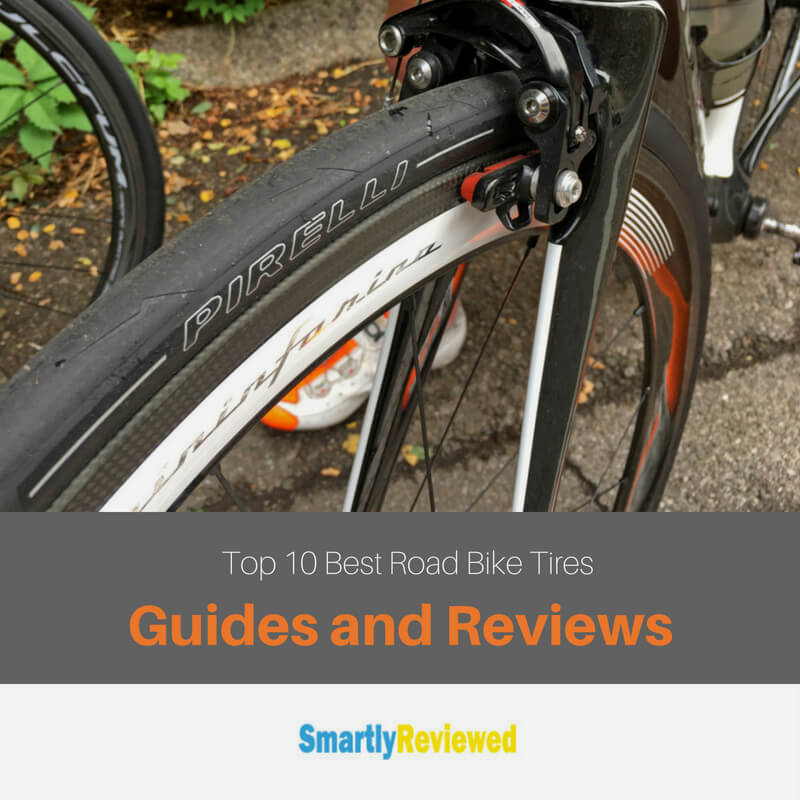 And finally there is also inch markings, which look like this; 28 x 1.40". In this case, the first number refers to the outer diameter of the rim and the second number refers to the tire width.
And finally there is also inch markings, which look like this; 28 x 1.40". In this case, the first number refers to the outer diameter of the rim and the second number refers to the tire width.
The trend in recent times has been towards larger tires that provide increased comfort and traction, whilst still providing reasonable rolling resistance at the same time. In the past, it was thought that skinnier tires, pumped up to high pressures were faster, but the latest research suggests bigger and softer is better. Wider tires can be run at lower pressures providing a more supple ride and also conform better to the road surface and provide additional comfort. Another benefit of larger tires is the shorter and wider contact patch, which, leads to less resistance and sidewall deformation, resulting in a faster tire. Specialized recently conducted its own studies into tire width and resistance, finding that there was almost a 25% reduction of resistance when using a 28c tire compared to a 21c tire.
Before you go buying the largest road tire available, it's important to know that the tire's width must sit within the recommended wheel rim range and not be compromised by frame clearance, brakes or any additional accessories such as fenders. Consult your place of purchase, or the manufacturer if you're unsure of the limits of your bike.
We've discussed the influence tire size has on performance and comfort but the choice of wheels is just as important.
Modern wheels are becoming wider, not only to accommodate the push for larger tires but to also improve aerodynamics and comfort. A wider rim is shown to have better aerodynamics than a narrower rim, and the greater amount of air volume provides additional comfort. Rim widths are measured internal or externally, and while external rim width is important for aerodynamics, we're more concerned with the internal rim width, which, influences comfort, rolling efficiency, and tire shape.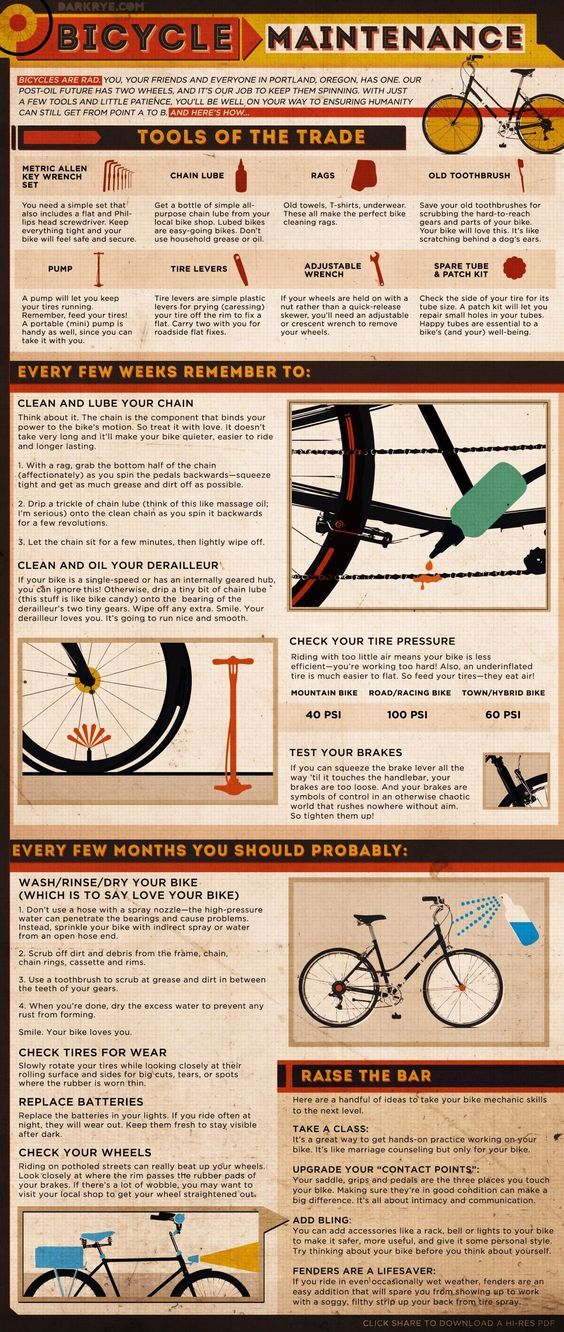
Currently, a narrow road rim measured internally is anything under 17mm, while a wide rim is anything measured internally greater than 19mm. A wider rim will create a wider tire, and so a tire marked as being 25mm, may measure above or below this figure when applied to the wheel. For more on road bike wheels, how they influence ride quality and what to look for, read our guide to Road Bike Wheels.
Road tires will typically feature a smooth tread surface and are commonly known as ‘slicks’. These offer the highest surface area with the ground on smooth surfaces and provide good levels of rolling resistance and grip. Some road tires do feature a subtle tread pattern, something that could possibly offer marginal improvements in grip, although data on the subject is inconclusive. Other factors like tire pressure, thread count, rubber compounds and rim/tire width are bigger factors when it comes to grip.
A tire's tread is usually made from butyl rubber and can include additives that provide improved puncture protection, improved grip and/or a splash of colour. Different types of compounds can be used to improve rolling resistance or traction, as such, it's common to see tires with two or even three compounds in the tread to provide enhanced rolling resistance through the middle of the tire, but more grip on the edges.
Different types of compounds can be used to improve rolling resistance or traction, as such, it's common to see tires with two or even three compounds in the tread to provide enhanced rolling resistance through the middle of the tire, but more grip on the edges.
Unfortunately for the majority of us, signalling back to the team car and swapping a wheel in the event of a puncture isn't a reality, and so, a tire with good puncture protection is essential.
As mentioned, most tires will have some additional puncture protection either in the form of a sub-tread layer, puncture protection belt or more rubber. These hard wearing compounds prevent sharp objectives like glass, tacks, and thorns from penetrating into the tube and causing a flat. Manufacturers aim to create an effective puncture protection layer without adding excessive weight or adversely influencing a tire's rolling resistance.
As well as the inbuilt puncture protection mechanisms, there are a few things you can do to prevent punctures.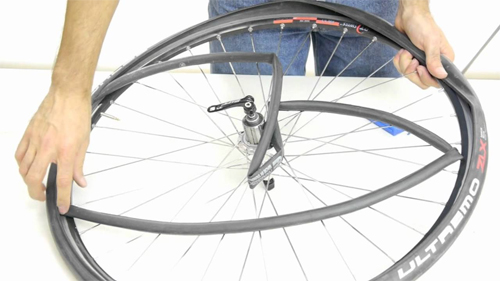
Inflation: Under-inflated tires are more prone to punctures so keep within the manufacturer's guidelines.
Check for foreign objects: A good habit is to regularly check your tire for any foreign objects that may have embedded themselves along your journey. These small pieces may not cause a puncture immediately, but if you ride with them long enough they will work their way through the tire and into the tube, eventually causing a flat. If the object has created enough of a hole that you can see the fibres of the casing, it's time for a new tire.
Replace worn tires: We discuss below how to check for worn tires, which, is important as worn tires are more prone to punctures. As the tread wears down, there's less preventing foreign objects piercing through and causing a puncture.
Tire pressure is a hot topic and in recent times there has been a shift from super high pressure to lower pressure. When the pressure in a tire is 'high', the rolling resistance is improved and the tire is less susceptible to punctures. 'Low' pressure in a tire provides better comfort and grip.
When the pressure in a tire is 'high', the rolling resistance is improved and the tire is less susceptible to punctures. 'Low' pressure in a tire provides better comfort and grip.
When trying to ascertain the correct tire pressure, it's far more involved than pumping up the tire until it's firm and leaving it there. Factors such as rider weight, tire size, road surface and ride quality will all influence your correct inflation figure.
A general rule is the narrower the tire or the heavier you are, the more pressure will be required. Exactly by how much you need to raise the PSI (pounds per square inch) per kilogram is up for debate but a common relationship is an additional 1% of tire pressure for each 1kg. The below table is from one of the world's leading tire manufacturers, Schwalbe, and provides a good indication of what you should be aiming for.
| Body weight | |||
|---|---|---|---|
| Tyre width | approx.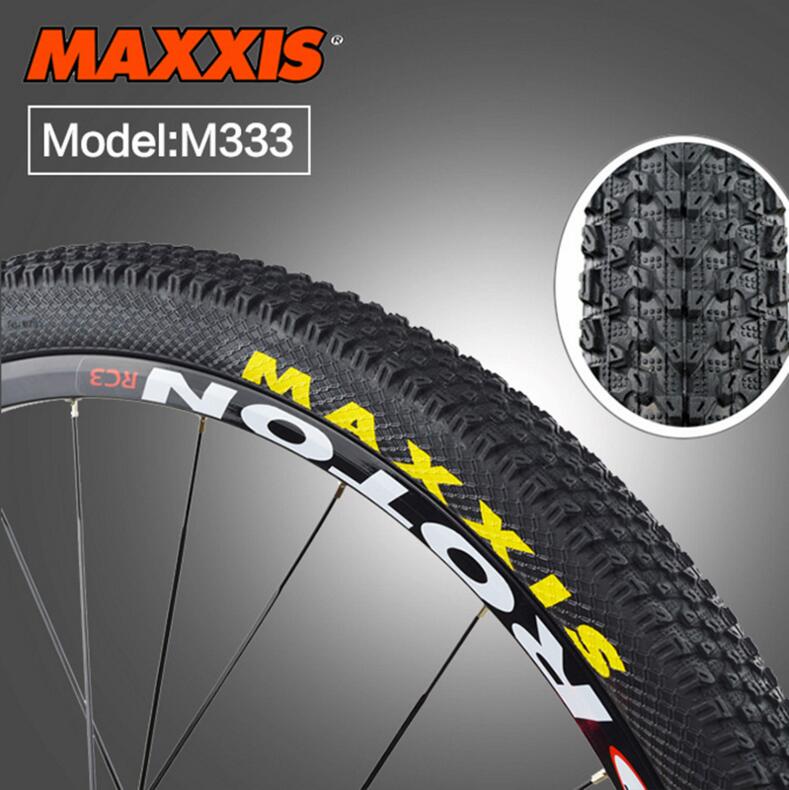 130lbs / 59kg 130lbs / 59kg | approx. 185lbs / 84kg | approx. 240lbs / 109kg |
| 25 mm | 85 psi | 100 psi | 115 psi |
| 28 mm | 80 psi | 95 psi | 110 psi |
| 32 mm | 65 psi | 80 psi | 95 psi |
| 37 mm | 55 psi | 70 psi | 80 psi |
| 40 mm | 50 psi | 65 psi | 80 psi |
Tire pressure certainly isn't a set and forget item, you should check your tire pressure often, about once a week as a minimum. Air will slowly filter through the tube and tire and given the high pressure and relatively thin tire walls, this will happen relatively quickly compared to a car tire. This is particularly important if you're running a tubeless set up as the porous nature of tubeless tires have a tendency to seep air at a faster rate than clinchers.
[externalhotoffer group="EHO_2"]
Tires can last anywhere from 1,000km to 10,000km, and so with such a large variance, it's important to know how to check for tire wear and replace when appropriate. Most manufacturers will specify a distance range but depending on the road surface, the overall load, riding conditions and tire pressure, tires may wear prematurely, so use the recommendations as a guide and trust your judgment if you think it's time to change them.
Many tires will have wear indicators in the form of small holes in the centre of the tire to indicate the amount of tread left. Once you can no longer see the dots, your tire is well and truly worn. As a rule, if you can see the puncture protection belt or the casing of the tire, it's time for a replacement. If you wanted to be more proactive than that, one of the first signs the tire is wearing is a squaring off of the tire through the centre (flat top).
Rolling resistant is the resistance from the tires as they contact the road.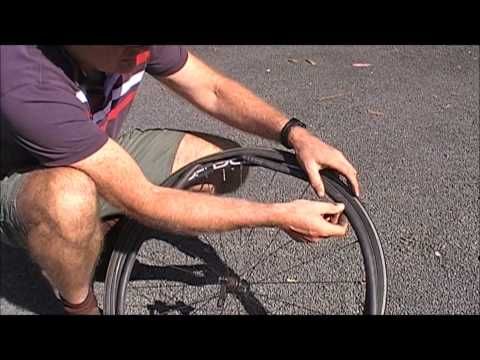 The major factor affecting rolling resistance is the deformation of the tire as it conforms to the road surface and its small undulations. For a road tire that mostly covers smooth surfaces, higher pressures can be used as there will be small amounts of deformation and resistance as a result. An example where lower pressures are beneficial is on the roads of Paris-Roubaix, where riders have to race across old, cobbled roads. In this scenario, softer tires conform to the surface, meaning the bike has less vertical movement and more forward movement.
The major factor affecting rolling resistance is the deformation of the tire as it conforms to the road surface and its small undulations. For a road tire that mostly covers smooth surfaces, higher pressures can be used as there will be small amounts of deformation and resistance as a result. An example where lower pressures are beneficial is on the roads of Paris-Roubaix, where riders have to race across old, cobbled roads. In this scenario, softer tires conform to the surface, meaning the bike has less vertical movement and more forward movement.
All of the factors we've discussed - tire width, pressure, construction, tread pattern - influence a tires rolling resistance, and so the challenge for manufacturers is to create a tire that performs well in each of these areas, or extremely well in one or two specific areas, race tires for example.
Typically speaking, tubeless tires tend to offer better rolling resistance figures than clinchers. This is largely due to the friction between the tube and the tire being eliminated altogether. What's more, tubeless tires are also widely regarded for their supple ride quality as a result of the ability to run lower tire pressures compared to clinchers.
What's more, tubeless tires are also widely regarded for their supple ride quality as a result of the ability to run lower tire pressures compared to clinchers.
If you ride a clincher than the choice of tubes can have an impact on ride performance and overall durability. Much like a tire, tubes are predominantly made from butyl rubber and a mixture of other compounds that make them elastic enough so they can be used on a variety of tire sizes, whilst still having thick enough walls to retain air. Tubes can also be made from latex, which, roll better and have higher levels of puncture resistance. The downside of latex tubes is they don't retain air well, and so they need to be inflated regularly, almost daily. As a result, they aren't a popular choice for recreational riders.
Valves are bonded onto tubes in order to be inflated and road tires have two options; Schrader and Presta. Presta valves (aka - high pressure or 'French' valves) are most commonly found on higher-end bikes and are easy to recognise because they are significantly narrower than Schrader valves. Schrader valves are most commonly found on recreational and entry-level road bikes, they are also the same valves used on car tires. As each valve is different, unique connections at the pump head are often required to pump up the corresponding tire. Schrader connections require a pin to push down the spring, whereas Presta valves are opened via the lock ring. Read our How to Pump Up a Bike Tire article for more information on valve tires.
Schrader valves are most commonly found on recreational and entry-level road bikes, they are also the same valves used on car tires. As each valve is different, unique connections at the pump head are often required to pump up the corresponding tire. Schrader connections require a pin to push down the spring, whereas Presta valves are opened via the lock ring. Read our How to Pump Up a Bike Tire article for more information on valve tires.
We hope this guide has been helpful and provided some valuable information. You can browse BikeExchange for road bike tires, or search for your local bike shop to get further assistance.
Without air-filled tires, bicycles would ride much slower and harder. And the jargon that is present in the near-wheel theme can turn your head, so let's deal with it in order.
The vast majority of bikes around the world use the standard tire/tube combo we're all familiar with, but when the eye turns to high-performance and niche bikes, the eye is drawn to completely different types of tires.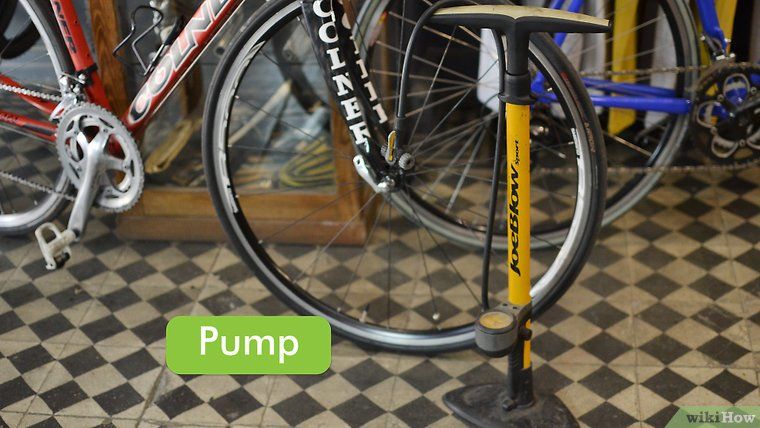 In this article, we will try to cover this topic and clarify the differences. By the way, tires are not the only ingredient for a “delicious” bike. We understand this, and therefore we wrote an article where we choose wheels for a road bike. Don't thank)
In this article, we will try to cover this topic and clarify the differences. By the way, tires are not the only ingredient for a “delicious” bike. We understand this, and therefore we wrote an article where we choose wheels for a road bike. Don't thank)
And now some historical background.
At one time, bicycles had solid rubber tires, which made riding on different surfaces very hard and uncomfortable. In 1887, John Boyd Dunlop, a Scottish veterinarian living in Belfast, was the first to install pneumatic tires, experimenting on his son's bicycle before moving on to larger racing bike wheels. Dunlop's key discovery was the observation that air-filled wheels were not only more comfortable, but also made it possible to drive faster. The inventor conducted an experiment in which he ran two wheels across his yard. The hard rubber wheel stopped and fell, while the pneumatic tire kept moving until it hit the gate and bounced off. Deformed by the relief of the road surface, the air-filled tire had less rolling resistance. Yes, it also has rolling resistance, but this value cannot be compared with a solid tire. Dunlop received a patent for the invention in 1888, but it turned out that another Scot, Robert William Thomson, had patented pneumatic tires as early as 1847, invalidating Dunlop's claim to discovery.
Yes, it also has rolling resistance, but this value cannot be compared with a solid tire. Dunlop received a patent for the invention in 1888, but it turned out that another Scot, Robert William Thomson, had patented pneumatic tires as early as 1847, invalidating Dunlop's claim to discovery.
The unsung hero of the inventor's story is the president of the Irish Cycling Association, Harvey Du Cros. After his sons were run over by a pneumatic tire racer in a competition, Du Cros approached Dunlop and they formed a company that used the invention. The withdrawal of the patent was a big blow to Dunlop, but after flooding the market with an interesting product, Du Cros merged and obtained other related patents that allowed Pneumatic Tire to survive.
Dunlop himself retired in 1895, at the age of 55, while Du Cros remained at the helm of the company after a subsequent change of ownership. Subsequently, the name of the company changed to Dunlop Pneumatic Tire, although the inventor himself was no longer involved in the management process. Soon, the production diversified and began to occupy the market of automobile tires along with other rubber products, which allowed the brainchild of Dunlop to become one of the largest brands and the largest company of the twentieth century.
Soon, the production diversified and began to occupy the market of automobile tires along with other rubber products, which allowed the brainchild of Dunlop to become one of the largest brands and the largest company of the twentieth century.
The familiar Dunlop name hasn't appeared on bicycle tires for decades, but the inventor is still remembered as the father of the pneumatic tire. Probably, in modern wheels, he would see the descendants of his discovery, made for the comfort of his own son.
Dunlop's first prototypes consisted of a rubber tube made by gluing the two ends of a strip of rubber attached to the wheel with linen tape, which was nailed or bolted to the wheel. Today's tires are much more complex.
However, rubber is still used to this day to keep the air in the wheel. Usually this function is taken over by a chamber inside the tire, which can be replaced or repaired in the event of a puncture. The tubes are made from synthetic butyl rubber, obtained from petroleum products or from natural rubber, which is found in the sap of the rubber tree. However, where are these environmental hooligans with their hydrocarbons... Continental plans to produce tires from dandelions! This is where the guys are stuck!
However, where are these environmental hooligans with their hydrocarbons... Continental plans to produce tires from dandelions! This is where the guys are stuck!
The chamber is located inside the tire, and the fabric cord does not allow it to inflate more than necessary, thus creating excess pressure in the wheel. Cord, which typically has non-woven fibers at an angle to each other, can be made from nylon, polyester, cotton, or silk. As a general rule, the denser the cord - measured in threads per inch or tpi - the better the quality of the tire. Base tires are 15 or 33 tpi, and the cord used in the best examples is usually 120 tpi, or even 320tpi. Larger numbers indicate that the manufacturer is adding up the thread count in multiple layers.
Between the bead (it lies on the rim) and the tread (it is also a treadmill) there are side walls. They are often coated with a reflective layer for visibility at night, a solution most often found on city bikes.
The tire, among other things, must have good grip, and for this it has an outer layer of rubber - a tread. Tread rubber is made by mixing with various additives, including carbon black and silica, to improve traction and durability.
Tread rubber is made by mixing with various additives, including carbon black and silica, to improve traction and durability.
Many tires are equipped with an additional anti-puncture layer under the tread to reduce the chance of punctures.
The main goal of a tire manufacturer is to reduce rolling resistance to an absolute minimum. To this end, high-quality tires have thin walls and tread. Almost all tires have these characteristics, but their assembly details may vary. Below we will look at the different types of tires and their features.
Not only tire manufacturers, but also attachment manufacturers are fighting for low rolling resistance. We wrote an article where CeramicSpeed presents the innovative drivetrain DrivEn. Everything is for you.
An off-road clincher like the Specialized Trigger Pro has a raised tread pattern for good traction on loose surfaces.
The Clincher is the standard tire we all know, love and curse when it goes flat. It has a U-shaped profile in cross section, formed into a circle on a special machine. The bead with a ledge at the ends of the profile is hooked to the rim, which has reciprocal ledges. The cord, in turn, passes through the entire tire, including the beads. The tread is formed during the manufacturing process of the tire.
It has a U-shaped profile in cross section, formed into a circle on a special machine. The bead with a ledge at the ends of the profile is hooked to the rim, which has reciprocal ledges. The cord, in turn, passes through the entire tire, including the beads. The tread is formed during the manufacturing process of the tire.
The big advantage of this design, and the reason it dominates, is that its installation and replacement is very simple and does not require a high level of skill, so the tube can be replaced quite easily and quickly if the wheel is punctured. Combination of lug on rim and bead on tire provides protection against disassembly when inflated; Usually, the manufacturer provides a double pressure margin, so that the tire is disassembled only if critical values \u200b\u200bare exceeded. The recommended pressure of the company is always indicated on the side surface of the tires. If the tire is inflated with less pressure, it may spin on the rim when braking or actively spinning, which will most likely lead to a replacement of the tube; can get sidewall damage on uneven roads, thereby destroying the chamber and wheel rim; driving on a tire with a pressure less than the recommended one is simply difficult, since it has a high rolling resistance due to the large amount of deformation; it can be disassembled on the way; low pressure promotes punctures.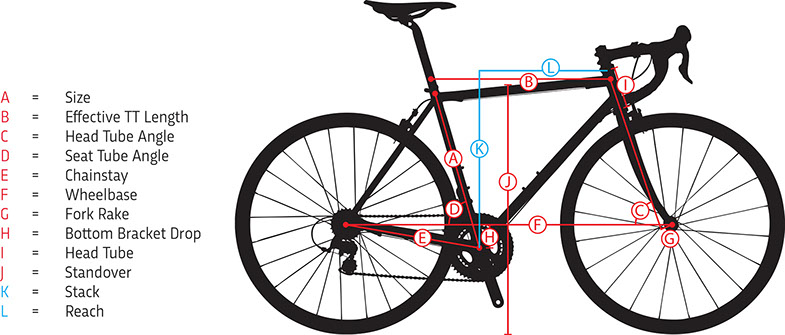 Increased pressure entails disassembly of the wheel, tire rupture, and driving on such a wheel will be very, very uncomfortable; by the way, as in the case of reduced pressure, increased pressure also has a negative effect on rolling resistance, as it ceases to deform on the surface of the coating.
Increased pressure entails disassembly of the wheel, tire rupture, and driving on such a wheel will be very, very uncomfortable; by the way, as in the case of reduced pressure, increased pressure also has a negative effect on rolling resistance, as it ceases to deform on the surface of the coating.
Both of these extremes can negatively affect both the comfort of movement and the safety of the trip. After all, if the wheel goes down completely or disassembles at a decent speed, then the loss of control is guaranteed.
The disadvantage of clincher/conventional tires is that they are inherently heavier than road tubulars because the rim gets taller to form lugs and the tire has a bead. Budget products are made with a steel bead, expensive ones are made with Kevlar or similar material, which allows them to be reduced in weight and compactly folded for storage or transported as spares.
A drawback, not inherent in design but rather in the slightly anarchic nature of the bicycle industry, is the lack of rigid standardization, which results in a run-up in size between identical wheels. The most common tire size for road bikes is known as 700C, a value that comes from the now defunct French wheel sizing system. All 700C rims and tires measure 622mm bead according to the ISO system for sizing.
The most common tire size for road bikes is known as 700C, a value that comes from the now defunct French wheel sizing system. All 700C rims and tires measure 622mm bead according to the ISO system for sizing.
We assume that in the process of reading you often come across a mention of road bikes, we also assume that this aroused your interest in this type of bicycle. It's still possible. So, it is precisely on this occasion that we suggest that you familiarize yourself with the article, where the geometry of a road bike is described and explains the numerous questions that beginners have.
And once again - the standard does not impose strict restrictions on the size of the wheels. It is natural for some tire and rim combinations to be quite easy to match, while others are extremely difficult or even impossible. When assembling new wheels, everything becomes clear when the tire begins to tight into place. If they are hard to install, they will be just as hard to remove, which can be a big problem if you try to patch a tire on your way to work on a dark, cold, wet January morning.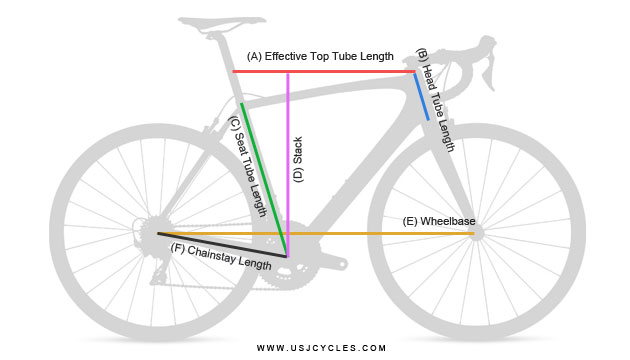
Tubular road tyre, Vittoria Corsa, has a cord attached around the inner tube and no retaining bead. Instead, the tire is glued to the rim.
This design is most similar to tires sold by Dunlop in the 1890s. The cord is wrapped around the inner chamber and secured with tape for a secure fit. All this is then glued to the rim.
The biggest advantage of this tire is that it is light in weight. Without a bead and a seat for it on the rim, tubular wheels will always be lighter than an equivalent clincher, although the difference is so small today that it no longer matters.
If the tube is punctured while riding, you will have to replace the tire. This implies a spare, traditionally tied to the saddle rails. In addition to the tire itself, you will need glue so that it is properly fixed on the rim.
The status quo is both an advantage and a disadvantage of tubes. It is necessary to replace the entire tire, because on-site repair is not possible, but the replacement process is faster than replacing the tube on a regular wheel. To repair the tube, you need to find a puncture, remove the protective tape, push the cord and pull out the chamber section. After repair, the process is reversed to return everything to its place. This feature of tube repair is the main reason why they have almost completely disappeared outside of big-time sports. Although, again, they are also slowly being replaced from professional competitions by another type of tire, which penetrates deeper and deeper into the cycling industry and everyday rides. But more on that later.
To repair the tube, you need to find a puncture, remove the protective tape, push the cord and pull out the chamber section. After repair, the process is reversed to return everything to its place. This feature of tube repair is the main reason why they have almost completely disappeared outside of big-time sports. Although, again, they are also slowly being replaced from professional competitions by another type of tire, which penetrates deeper and deeper into the cycling industry and everyday rides. But more on that later.
Just in case you're wondering, we wrote an article about the bikes of the 2019 Tour de France participants, where the technical parameters of each of them are listed. The tires on which they storm the most important race of the year are also indicated there. We wrote about some bikes, such as Wilier Zero SLR, Specialized S-Works Shiv TT, Cube Litening C: 68X, Scott Addict RC separately and in detail, although they are also in the article a couple of lines above, in case you are interested.
The tubular tire is easy to fold and store or carry as a spare.
Tubular wheels are still widely used in professional racing, because even with a puncture, the movement can be continued until the support car arrives, and, of course, the racers do not repair them themselves and do not wear them anywhere for this.
However, some athletes claim that quality handmade tubes in particular provide better performance than clinchers and are less prone to punctures. Tires get their qualities from thin, flexible cords, which can be made from cotton, polyester or even silk, and thin layers of tread on the tread. Instead of the tire being vulcanized into a single unit, as with conventional wheels, the tread is mounted at a lower temperature during the production of tubes. This technology is said to allow the treadmill to remain elastic, as the process does not increase the hardness of the rubber, as vulcanization does.
The " Tubeless " logo is the only way to visually tell if a tire has no tube.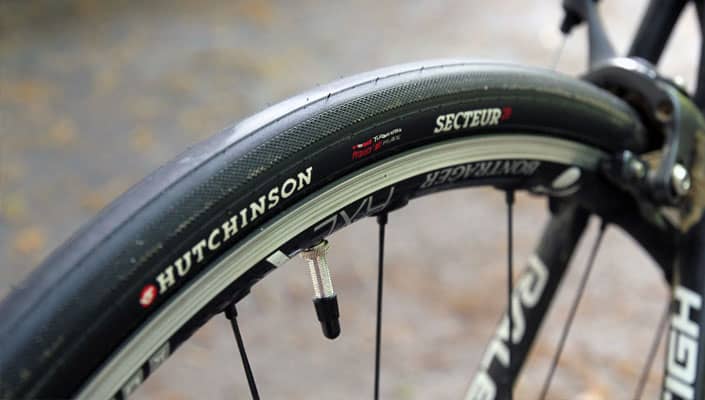
Hint in the name: These are clincher tires that don't have a tube. Instead, the tire is hermetically sealed to the rim and the air is held in either by a rubber layer on the inside of the tire or by a liquid sealant.
The main advantage is that these wheels are immune to a certain type of puncture known as snakebite. A snakebite occurs when the tube hits the crease in the tire between the ground and the rim, creating the characteristic pair of holes in the tube. If it is not, then there can be no such puncture.
The puncture described is a headache for mountain bikers who typically run tires at low pressure for maximum grip, so they are enthusiastic about tubeless. Snakebite is less common on road bikes, although due to deteriorating road conditions, in the last decade cyclists have been using thicker tires at lower pressures to improve riding comfort.
Tubeless tires require a matching rim, either without spoke holes or with a special rim tape that seals the spoke holes. The tubeless bead is shaped to create a good seal on the rim, and its dimensions are much more precise than conventional clinchers.
The tubeless bead is shaped to create a good seal on the rim, and its dimensions are much more precise than conventional clinchers.
Tubeless tubes are divided into two types: fully tubeless and suitable for tubeless use. Fully tubeless have a layer of rubber on the inside to hold air. Tubeless-suitable tires have the required bead shape to seal on the rim, but have a conventional tread to save weight without the extra layer of sealing rubber. By adding 30-60 g of sealant, this problem is completely solved and the whole structure, as a rule, is lighter than a clincher with a chamber.
There are likely to be instructions on the Internet for installing regular tires on regular rims using rim tape and sealant. Great idea, but not for road bikes. Road tire pressures are much higher, requiring a high precision fit of the wheel on the rim, and this is a determining factor for successful operation. Otherwise, the tire runs the risk of being disassembled in motion and failing. By the way, disassembling the wheel at speed entails damage to the rim, which can be made of carbon fiber. In this scenario, the tire becomes the least of the problem. Well, if we consider the situation from the point of view of personal safety, then the damaged tire and rim are nothing at all.
In this scenario, the tire becomes the least of the problem. Well, if we consider the situation from the point of view of personal safety, then the damaged tire and rim are nothing at all.
Hutchinson and Shimano have created special Road Tubeless tires and rims, while others have developed their own take on the concept. Most recently, Mavic announced the Road UST wheel and tire series and submitted technical information to the International Organization for Standardization and the European Tire and Rim Technical Organization for ratification as a standard that any wheel manufacturer can use.
In the article we mention either road bikes or cross-country direction. However, there are also gravel bikes, which are a transitional option between these two extremes, where the topic of tubeless tires is very relevant. The recently introduced Cannondale Topstone is a very good example to explore this variety of bikes.
With thin tread and only two plies. The tubeless road tire uses the same lightweight construction as the traditional tube.
The tubeless road tire uses the same lightweight construction as the traditional tube.
Tubeless Road Tire (Tubeless) is a clincher made using the same technology as the handmade tube. The terminology used here is marketing terminology, partly to explain the high cost of some tubeless tires.
Fans of tubeless road wheels say they roll like tubes, which is to be expected since they use the same high thread count cord materials and thin, hand glued tread. Cannondale's new SuperSix Evo road bike comes equipped with this type of wheel from the factory, and we talked about that as well.
A few years ago, manufacturers assumed that tubeless road tires would be among the fastest and most sought-after - which is confirmed literally today, as the Tour de France is carefully switching to this type of rubber. We wrote about the technologies of the future at the 2019 Tour de France and the main trends that go deeper every year.
By the way, tubeless road racing is not the only point of tension. Not so long ago there was a lot of heated discussion about the use of hydraulic disc brakes on road bikes, and the same Tour de France shows us today that this type of brake is taking root well. We already wrote about road bike trends back in 2018 and we recommend that you read it, this topic is covered there and the article is still relevant. The UCI approval of disc brakes became the basis for their further development in the road world.
Not so long ago there was a lot of heated discussion about the use of hydraulic disc brakes on road bikes, and the same Tour de France shows us today that this type of brake is taking root well. We already wrote about road bike trends back in 2018 and we recommend that you read it, this topic is covered there and the article is still relevant. The UCI approval of disc brakes became the basis for their further development in the road world.
Tannus tires are made from lightweight foam. The holes are for attaching to the rim.
Various manufacturers have made many attempts to market with anti-puncture tires that fit regular rims. They can be a solid piece of rubber or a thick layer of rubber around a hollow core, as well as foam materials that take up the entire volume of the wheel.
Without compressed air inside, these wheels tend to be very stiff. To stay on the rim, they must fit snugly, which makes mounting them much more difficult.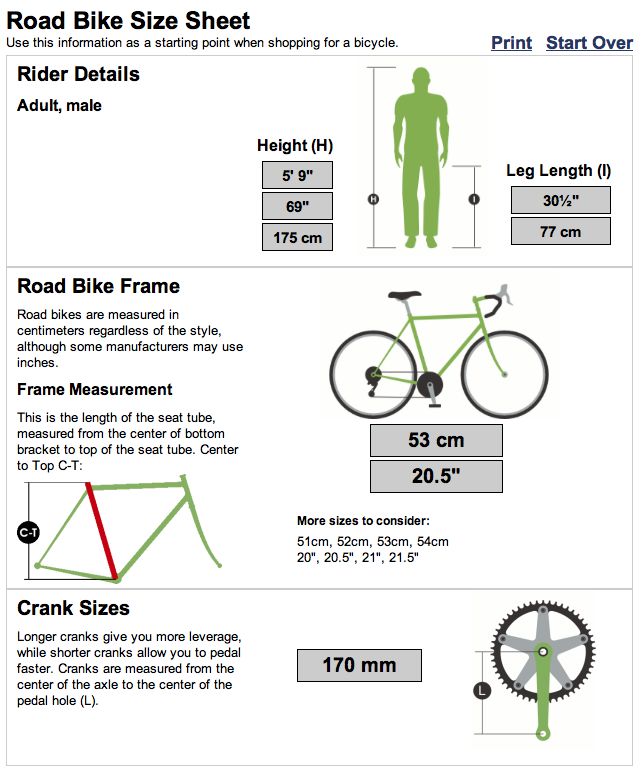
Solid and foam tires are often made from polyurethane, rather than the regular rubber found on any other type of wheel. This is where their second drawback manifests itself - insufficient grip on the roadway.
The only manufacturer that seems to be able to overcome some of these problems is Tannus, a Taiwanese division of a chemical company that, among other things, makes cushioning soles for sports shoes. Tannus has a patented foam they call Aither 1.1 and claims tires made from this material are as good as high quality city bike wheels.
Cyclists who have used Tannus tires agree. Reportedly, the rolling resistance is only slightly higher than the pneumatic counterpart, and the traction is quite tolerable.
However, Tannus only partially solved the installation problem by using plastic rods that go through the tire to hold it in place. This makes the mounting process a labor intensive one best done at a bike shop that stocks Tannus specific tools.
This makes the mounting process a labor intensive one best done at a bike shop that stocks Tannus specific tools.
Full name
Borik Vladimir
Passionate cyclist since 2014. I could not stand it when the bike made extraneous sounds in motion, which forced him to sort out everything, re-grease and renew it many times. He likes to delve into the subtleties, therefore, numerous bulkheads of his bike later turned into a job as a bike mechanic. Passed a thorny path from Shimano Acera to Comance Tomahawk through SLX to XTR to Specialized S Works, and then just switched to a budget road bike on Campagnolo Xenon 10 equipment.-year, where Light took 5th place on the route. Currently remains an active bicycle user and continues to deepen his knowledge in this area.
Tue, 08/06/2019 - 03:51
Giro d’Italia 2021: route and altimetry of all stages
11 things that all MTB riders love
Nicolai Argon GX: expensive aluminum gravel with enduro genes
Every bicycle wears out a little as it is used.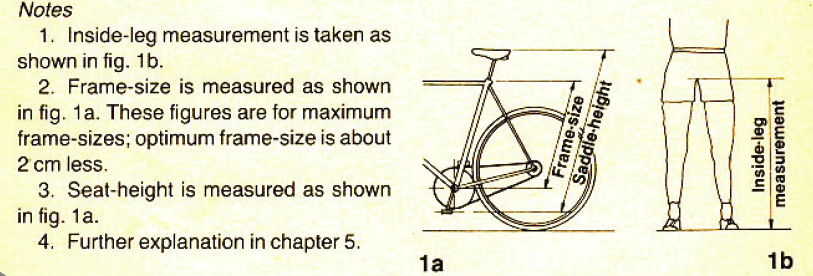 This also applies to bicycle tires, which are very important to change in a timely manner. To do this, you need to know the tire markings. It is necessary to be guided by the parameters set by the manufacturers. It should be borne in mind that the wheel, or rather its size, directly affects the parameters of a bicycle tire.
This also applies to bicycle tires, which are very important to change in a timely manner. To do this, you need to know the tire markings. It is necessary to be guided by the parameters set by the manufacturers. It should be borne in mind that the wheel, or rather its size, directly affects the parameters of a bicycle tire.
How to determine parameters
EC
Most modern manufacturers use the European marking according to the ETRTO classification. This abbreviation stands for European Tire and Rim Technical Organization.
The following indicators apply here:
By the way, Soviet-made bicycle tires had reverse double markings. The inner diameter of the tire was in the first place, the width of the chamber was indicated in the second place.
To date, the marking adopted in Europe is considered the most accurate and convenient in comparison with the rest.
Inch sizing
This application of indicators also consists of two numbers listed through a multiplication sign or a fraction. For example, if the values are 28 x 1.4, then 28 equals the outer diameter of the tire, and 1.4 is its intended width in inches.
French
French marking may have the following meaning: 700 x 35C. Local manufacturers put down numerical values for width, inner diameter and outer diameter. Therefore, in this case, the figure 700 is the approximate value of the outer diameter. In turn, the designation "C" determines the inner diameter. The indicator decreases with the movement of the letter to the beginning of the alphabet. Therefore, "A" is the smallest, and "D" is the largest. In the above example, the value "C" defines an internal diameter of 622 mm. This system of recording values is not applicable to all bicycles (for example, not used for mountain bikes).
Local manufacturers put down numerical values for width, inner diameter and outer diameter. Therefore, in this case, the figure 700 is the approximate value of the outer diameter. In turn, the designation "C" determines the inner diameter. The indicator decreases with the movement of the letter to the beginning of the alphabet. Therefore, "A" is the smallest, and "D" is the largest. In the above example, the value "C" defines an internal diameter of 622 mm. This system of recording values is not applicable to all bicycles (for example, not used for mountain bikes).
How to determine the bore diameter?
So, if you need a bicycle tire, you should initially select the diameter of the wheel rim.
Diameter size 28 and 29 equals 622 mm. These two tires differ only in height and thickness.
27.5-inch wheels require a bore diameter of 584 and 590 mm.
For 26" size, select 559 mm.
Does tire width matter?
Specialized technical sites contain tables of correspondence to help in the selection of cell widths.